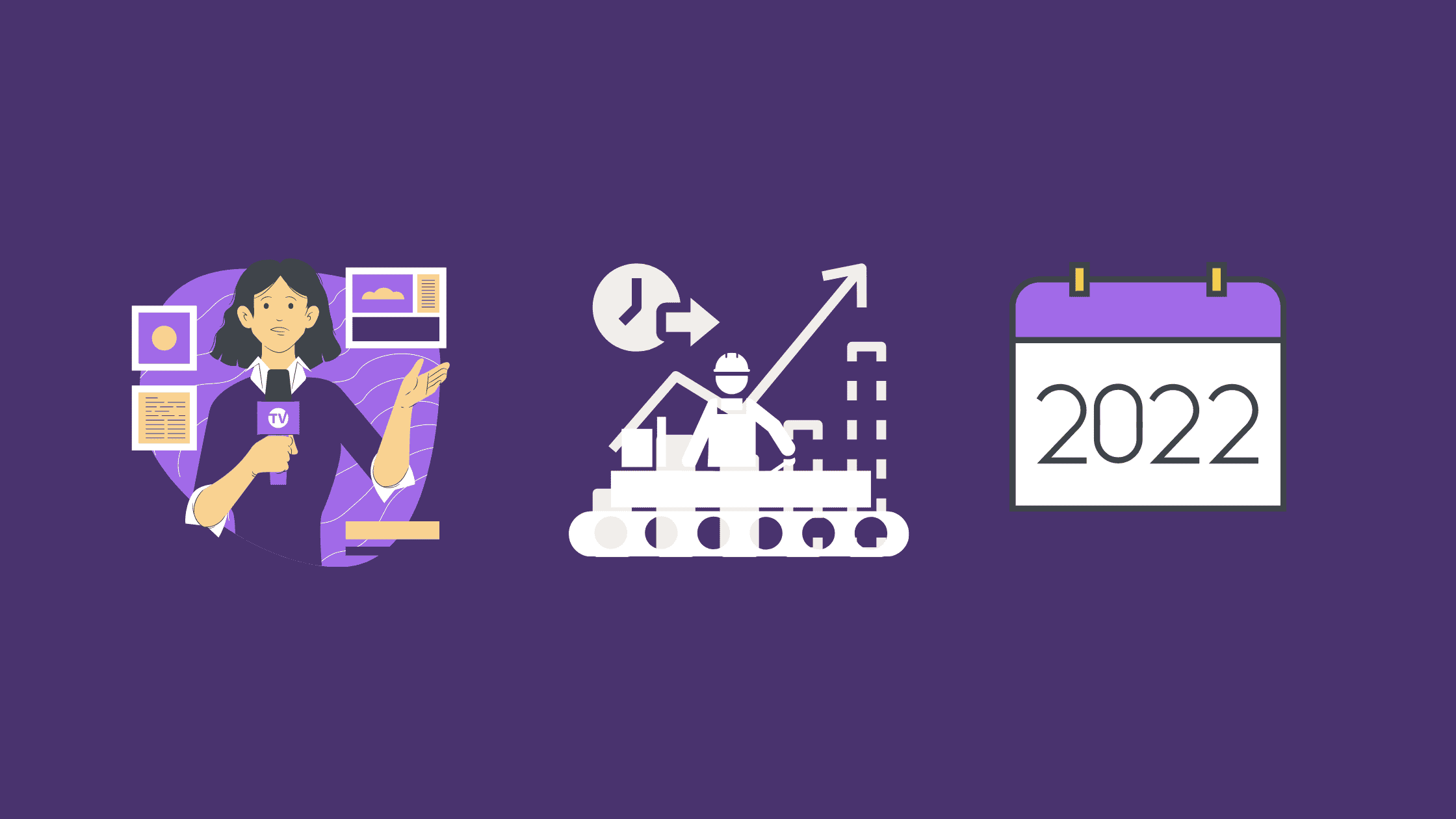2022 ERP trends show a strong return to growth next year. The outlook for 2022 reveals organisations are placing ERP back on the agenda.
Although traditional ERP technology has been deployed for decades new technologies are driving growth. The move to IoT, automation, digital transformation, globalisation and big data analytics are partly responsible for the growth spurt.
See here seven leading trends set to impact your ERP environment
1. Clear forecast for everything cloud
In 2021 we saw cloud-based ERP adoption skyrocket. More businesses shifted their data to the cloud to manage and update their systems with less investment. SaaS solutions began to dominate the ERP market as a result of their performance.
“Businesses continue moving to cloud ERP. The global cloud ERP market is expected to grow 13.6% annually and reach $40.5 billion by 2025.” Statista
It looks like the migration will continue in 2022, as more SMB organisations grow confidence in the cloud. As a result, there will be more demand for the right skill sets to add value.
2. Automation gets less artificial, more intelligent
Demand for automated industry processes is expected to grow. To meet the demand, ERP systems will increasingly open up to third-party add-ons and apps.
Intelligent ERP will not be based on a specific technology such as machine learning. It is more likely to be based on the ability to access more dynamic, event-driven solutions.
Practical ERP add-ons that automate flows, alerts, payments, labelling and invoice approval are not AI-driven. But they do pave the way to streamlined processes, better decisioning and speed. As more interface developments evolve, smart add-ons will be accessible to smaller organisations.
3. Moving into mobile ERP
The shift to remote work was a major catalyst to mobile ERP operations. Companies with cloud-first ERP systems are looking at ways to leverage cloud technology to improve work on the go.
Mobile ERP add-ons will offer more ways to gather valuable data from different points and provide real time updates. Employees will increasingly access ERP on their mobile devices for more automation and real time work. For instance; they will capture quotes and receive approvals while on the go.
Mobile ERP will also be used more often to reduce delays in delivery. The advantage is clear to manufacturing sectors where delays can put entire processes on hold.
4. Mobile warehouse gains traction
Manufacturers and distributors will welcome the move to mobile warehouse scanning. Mobile Warehouse Management Systems (WMS) are increasingly being used for stock visibility and trackability. Advanced mobile warehouse apps will help managers stay on the floor where they can be proactive, present and productive.
Mobile WMS integrations with ERP systems such as Microsoft Business Central will make it easier to manage inventory counts, shipping, receiving picks, bin management and more. This way the exact location, status and count of every item in a supply chain will be instantly identifiable.
5. Raw materials managed through ERP
One of the main problems in processing raw materials is the gap in knowledge on stock in real-time. This is a big pain point for instance in the food manufacturing sector. In this industry traceability and accuracy at all stages of production is critical.
An ERP – WMS integration provides accurate and rapid data on raw material inventory. It also offers insights on manufactured items in both systems. The ability to oversee raw materials through WMS systems integrated into ERP systems results in greater visibility, accuracy and trackability. As a result, warehouse operators can identify the exact location of items in their warehouse. They will also have real time data on raw material batches in production.
6. ERP increasingly integrated with IoT
The benefits of IoT integration are clear. It opens up a world of possibilities for ERP systems to gather, store and process unprecedented amounts of data. For a start, IoT – ERP integrations make it possible to review large amounts of data collected from sensors. As a result production processes can be closely monitored and tracked using real time data on machine performance.
The move to integrated IoT in ERP environments is expected to grow because organisations seek better asset management and real-time insights.
With the onset of 5G, expect to see data collected from endpoints in real-time without connectors to external sources.
On the downside, security issues will surge. Technologies like identity management, secured blockchains, and smart contacts will help to manage future threats.
7. Globalisation – localisation
Many companies with global supply chains have a severe case of pandemic hangover. Globalisation with localisation is a growing trend sprouting from a stressful supply chain year. Businesses expanding globally will still seek to operate effectively in the domestic markets despite the disruptions.
Historically, many companies sought to deploy a single global ERP system across all regional centres and affiliates. But in practice this approach was often costly and challenging to implement.
Local operations often have specific needs due to regional tax and monetary regulations. They struggle with a one-size-fits-all approach.
A two-tier ERP approach customizes ERP tools to meet global and local regulations and policies. Two-tiered ERP solutions sitting on cloud-based systems and one-code extensions make it easier to replicate operations across multiple centres.
In sum
2022 is earmarked as a growth year for ERP systems. Recent research shows the ERP market is expected to reach $86.30 Billion by 2030, growing at a rate of CAGR of 9.8% (2020-2027).
Established cloud-based systems, disrupted supply chains and remote work have placed ERP back on the agenda.
In 2022 expect to see ERP extensions and add-ons take centre stage. Gone are the days when IT departments took months to add a new feature.
Finally, expect to see more SMBs implementing new ERP systems and add-ons to gain operational efficiency, data-driven decisions and more mobility.







